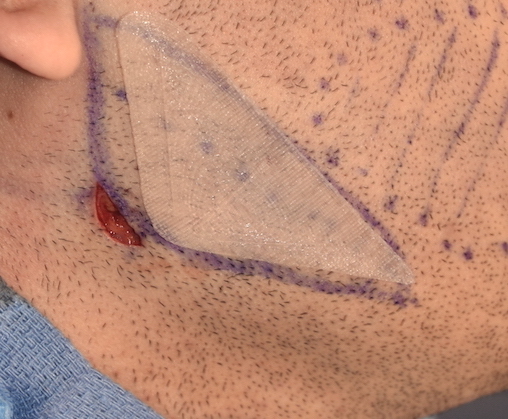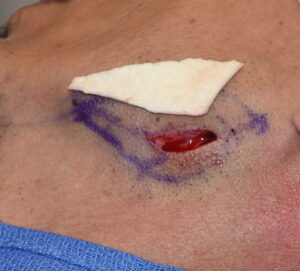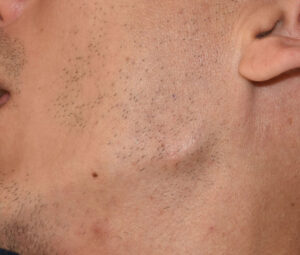Masseteric muscle dehiscence is a well known adverse aesthetic risk of jaw angle or jawline implants. While it has no adverse functional effects on lower jaw opening or closure, it creates a contour defect over the jaw angle area. It can occur in variable amounts from a small amount of jaw angle skeletonization to a more significant oblique jaw angle exposure.
The anatomic correction of masseteric muscle dehiscence is to reposition the muscle back over the bone, or more commonly, the jaw angle portion of the implant. But this is not always effective and when done using a traditional approach places a scar below the jaw angle area in the neck.
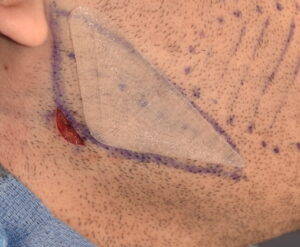
But their placement requires a transcutaneous approach with a skin incision. A neck incision is not very appealing given its aesthetic tradeoff. A more direct approach is a small incision right over the back end of the jaw angle. In men this usually places the incision at the junction of the hair bearing and non-hair bearing skin. Through a 1 cm incisional length any graft or implant can be placed to cover the extent of the contour defect by initially making a subcutaneous pocket.
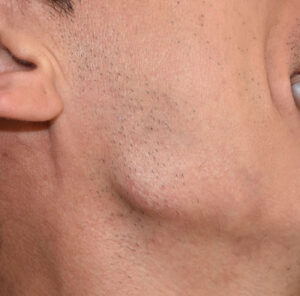
Dr. Barry Eppley
Indianapolis, Indiana

